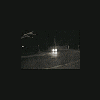Jaycar Boost Controller, Hand Controller, Fuel Adjuster
Announcements
-
Similar Content
-
Latest Posts
-
Done about 5k Km on the PS5's now, excellent street tyres, great in the dry, and the wet, seem to be wearing very well, I haven't measured tread depth, but it looks like minimal wear, I also had a different alignment done about 1500km ago, From looking at the tread wear, which is really only minimal, the alignment changes were based off how the tread looked, and how it felt throwing it around, the changes have shown great results 215/45 17 at 32 psi Front Caster: 5.5° Camber: -1.5° Toe: 0.0mm Rear Camber: -1.0° Total Toe-in: 1.5mm I actually prefer PS5's now over the RS4's, as the PS5's are much better in the wet IMO, and as the MX5 gets driven in all weather conditions doing daily duties, hwy trips, and blasts in the mountains, wet weather grip is high on my priority list
-
By Russell2208 · Posted
To update this thread. I got sent a replacement Attesa pro unit and all is now working as expected. Cheers -
FD is so sexy she can pull off tri-spokes
-
Indeed they do. Best my diff builder could tell is it's a combination of the different cut/angle and it would seem they lap them in well on accell but less so on decel. He had to use a slightly different pattern to the lap to get the best result noise wise. Also as the rear diff runs in, the whine is getting less. Overall they seem like a good thing so far. He's done a few neat crown/pinion before but all for race cars with loud everything, in most cases the exhaust is louder, so I am the first to notice.... and be somewhat of a pain
-
What do you mean by "test"? It sounds like you're just switching things on and off that you already know don't work. Get the wiring diagram and a multimeter and start looking for power where there is supposed to be power and earth where there is supposed to be earth. Look for continuity across switches that are otherwise unresponsive, etc etc.
-






Recommended Posts